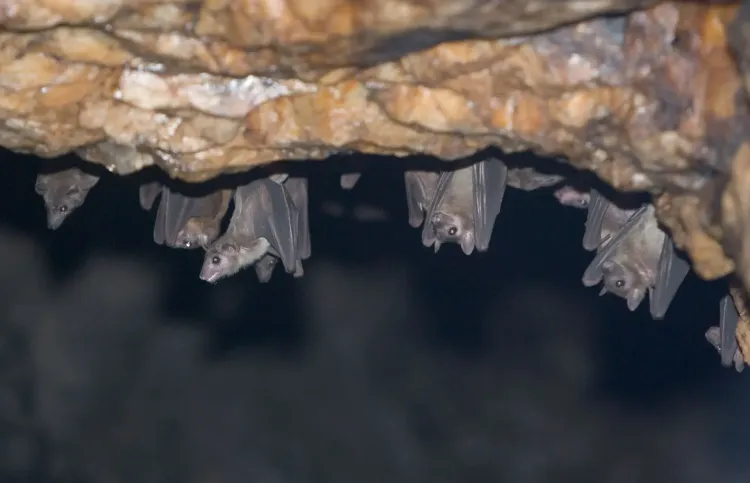Could a New Covid-like Virus from Moustached Bats in Brazil Pose a Threat?

Synopsis
Key Takeaways
- New virus BRZ batCoV detected in moustached bats.
- Distinct from known coronaviruses, posing potential risks.
- Spike protein has a unique furin cleavage site.
- Currently, no evidence of human infection.
- Highlights the need for monitoring bat populations.
New Delhi, Oct 31 (NationPress) A coalition of researchers from Japan, the USA, Australia, and Belgium has uncovered a novel Covid-19-like virus in a species of moustached bats in Brazil, raising concerns about a possible spillover and the emergence of a new disease.
Bats serve as natural reservoirs for numerous viruses, including betacoronaviruses—this group encompasses the Severe Acute Respiratory Syndrome virus 2 (SARS-CoV-2) and the Middle East Respiratory Syndrome virus (MERS-CoV).
The research team from Osaka and Sydney universities identified the virus, named BRZ batCoV, in the Pteronotus parnellii, a small insectivorous bat notable for the tiny tufts of hair on its face.
Despite the commonality of this bat species in South America, experts express concern that the virus may have been quietly spreading for months.
“We identified a complete genome of a new bat CoV (BRZ batCoV) from a Pteronotus parnellii bat sampled in Brazil, which is phylogenetically distinct from known betacoronaviruses,” the researchers stated in a preprint paper published on BioRxiv.
The analysis of the evolutionary lineage revealed that “the virus is sufficiently distinct from the five recognized Betacoronavirus subgenera to represent a new subgenus.”
“Importantly, the spike protein of this novel bat coronavirus contains a functional furin cleavage site at the S1/S2 boundary, with a unique amino acid sequence motif (RDAR) that is distinct from that found in SARS-CoV-2 (RRAR) by merely one amino acid,” the team reported.
The furin cleavage site plays a critical role in determining the host range, infectivity, and potential for cross-species transmission. It has been identified in the surface proteins of other RNA viruses, such as the highly pathogenic avian influenza viruses (Orthomyxoviridae) and Ebola viruses, as well as SARS-CoV-2, the virus responsible for the recent global pandemic.
Moreover, the researchers established that BRZ batCoV is not identical to Covid; rather, it is more closely related to MERS viruses.
MERS, often referred to as camel flu, spreads less efficiently than Covid but is significantly more lethal, claiming the lives of about one-third of those infected.
While the new flu strain exhibits “alarming exposure rates,” it may be silently spreading across regions, as suggested by Hongbo Bao, a researcher from the Changchun Veterinary Research Institute in China, in a statement to the US Sun.
Nevertheless, scientists who identified the new bat virus report no evidence that BRZ batCoV infects humans or spreads beyond bat populations.
The discovery “offers crucial insights into the evolutionary potential and zoonotic risk of BRZ batCoV,” they emphasized.
The findings “underscore the role of bats as significant reservoirs of genetic innovations pertinent to zoonotic emergence,” they concluded.









